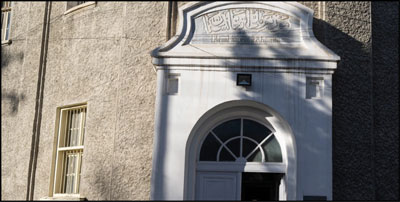The National Museum of Afghanistan is open once again and the Taliban, whose members once smashed their way through the facility de-stroying irreplaceable pieces of the country’s national heri-tage, now guard the building located in the capital Kabul.
Currently, about 50-100 peo-ple visit the museum each day, some of them Taliban members.
The museum, which hosts ar-tefacts from the Paleolithic pe-riod to the 20th century, re-opened just more than a week ago for the first time since the Taliban takeover of Afghani-stan in mid-August amid the chaotic withdrawal of US and NATO troops.
Its director, Mohammad Fa-him Rahimi, and his staff have so far been allowed to con-tinue in their positions al-though they, like many of Af-ghanistan’s civil servants, have not received salaries since August.
Afghanistan has been facing a banking crisis in the wake of the United States freezing bil-lions of dollars in Afghan as-sets and international financial institutions cutting funding for Afghan projects.
Only the security guards have changed, Rahimi said, with Taliban now replacing the po-lice contingent who used to guard the building and provid-ing female security guards to check visiting women.
Power cuts are frequent and the museum’s generator has broken down, leaving many of the exhibition rooms plunged into darkness.
On Friday, several Taliban, some with assault rifles dan-gling from their shoulder, were among visitors using the lights of their mobile phones to peer into display cases of ancient ceramics and 18th-century weapons.
“This is from our ancient his-tory, so we came to see it,” said Taliban fighter Mansoor Zulfiqar, a 29-year-old origi-nally from Khost province in southeastern Afghanistan who has now been appointed a security guard at the Interior Ministry.
“I’m very happy,” he said of his first visit to the museum, marvelling at his country’s na-tional heritage.
Zulfiqar said he had spent 12 years in Kabul’s notorious Pul-e-Charkhi prison, Afghani-stan’s largest.
While there, he said, someone had told him about the museum and he dreamed of the day when the Taliban would rule Afghani-stan again and he would be able to visit the museum.
During its first stint in power during the 1990s, the Taliban ransacked the museum, smashing priceless statues, especially those it considered un-Islamic.
One of such arte-fact, the remnants of a lime-stone statue believed to be of a king dating from the second century, stands at the en-trance to the museum build-ing, now restored by experts from France and the mu-seum’s own restoration de-partment.
In 2001, the Taliban destroyed two giant sixth-century Bud-dha statues carved into a cliff-face in Bamiyan in central Af-ghanistan on orders from Taliban leader Mullah Mo-hammed Omar, a move that met international outrage.
So, as the Taliban swept through Afghanistan earlier this year, taking province after province, there were grave concerns that a similar fate awaited the country’s cultural heritage, especially anything from pre-Islamic times. So far at least, this has not appeared to be the case.
Saifullah, a 40-year-old Tali-ban member from Wardak province and teacher in a reli-gious school said he believed the 2001 destruction of arte-facts in the museum had been carried out by lower-ranking Taliban members without or-ders from top-ranking officials.
Touring the museum for the first time, Saifullah, who goes by one name, said he would encourage his students, some of whom were now guards at the museum, to visit the Na-tional Museum of Afghanistan.
“Generations can learn from this, and what we had in the past,” he said. “We have a rich history.”Perhaps Afghanistan’s new government now agrees with the inscription engraved on a plaque outside the museum building’s entrance: “A nation stays alive when its culture stays alive.”








